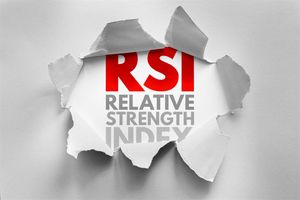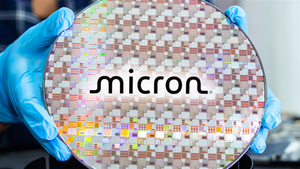
The relentless march of artificial intelligence, from generative models to autonomous systems, relies on a bedrock of advanced semiconductors. Yet, this critical foundation is increasingly exposed to the tremors of global instability, transforming semiconductor supply chain resilience from a niche industry concern into an urgent, strategic imperative. Global events—ranging from geopolitical tensions and trade restrictions to natural disasters and pandemics—have repeatedly highlighted the extreme fragility of a highly concentrated and interconnected chip manufacturing ecosystem. The resulting shortages, delays, and escalating costs directly obstruct technological progress, making the stability and growth of AI development acutely vulnerable.
For the AI sector, the immediate significance of a robust and secure chip supply cannot be overstated. AI processors require sophisticated fabrication techniques and specialized components, making their supply chain particularly susceptible to disruption. As demand for AI chips is projected to surge dramatically—potentially tenfold between 2023 and 2033—any interruption in the flow of these vital components can cripple innovation, delay the training of next-generation AI models, and undermine national strategies dependent on AI leadership. The "Global Chip War," characterized by export controls and the drive for regional self-sufficiency, underscores how access to these critical technologies has become a strategic asset, directly impacting a nation's economic security and its capacity to advance AI. Without a resilient, diversified, and predictable semiconductor supply chain, the future of AI's transformative potential hangs precariously in the balance.
The Technical Underpinnings: How Supply Chain Fragility Stifles AI Innovation
The global semiconductor supply chain, a complex and highly specialized ecosystem, faces significant vulnerabilities that profoundly impact the availability and development of Artificial Intelligence (AI) chips. These vulnerabilities, ranging from raw material scarcity to geopolitical tensions, translate into concrete technical challenges for AI innovation, pushing the industry to rethink traditional supply chain models and sparking varied reactions from experts.
The intricate nature of modern AI chips, particularly those used for advanced AI models, makes them acutely susceptible to disruptions. Technical implications manifest in several critical areas. Raw material shortages, such as silicon carbide, gallium nitride, and rare earth elements (with China holding a near-monopoly on 70% of mining and 90% of processing for rare earths), directly hinder component production. Furthermore, the manufacturing of advanced AI chips is highly concentrated, with a "triumvirate" of companies dominating over 90% of the market: NVIDIA (NASDAQ: NVDA) for chip designs, ASML (NASDAQ: ASML) for precision lithography equipment (especially Extreme Ultraviolet, EUV, essential for 5nm and 3nm nodes), and Taiwan Semiconductor Manufacturing Company (TSMC) (NYSE: TSM) for manufacturing facilities in Taiwan. This concentration creates strategic vulnerabilities, exacerbated by geopolitical tensions that lead to export restrictions on advanced technologies, limiting access to high-performance GPUs, ASICs, and High Bandwidth Memory (HBM) crucial for training complex AI models.
The industry is also grappling with physical and economic constraints. As Moore's Law approaches its limits, shrinking transistors becomes exponentially more expensive and technically challenging. Building and operating advanced semiconductor fabrication plants (fabs) in regions like the U.S. can be significantly more costly (approximately 30% higher) than in Asian competitors, even with government subsidies like the CHIPS Act, making complete supply chain independence for the most advanced chips impractical. Beyond general chip shortages, the AI "supercycle" has led to targeted scarcity of specialized, cutting-edge components, such as the "substrate squeeze" for Ajinomoto Build-up Film (ABF), critical for advanced packaging architectures like CoWoS used in NVIDIA GPUs. These deeper bottlenecks delay product development and limit the sales rate of new AI chips. Compounding these issues is a severe and intensifying global shortage of skilled workers across chip design, manufacturing, operations, and maintenance, directly threatening to slow innovation and the deployment of next-generation AI solutions.
Historically, the semiconductor industry relied on a "just-in-time" (JIT) manufacturing model, prioritizing efficiency and cost savings by minimizing inventory. While effective in stable environments, JIT proved highly vulnerable to global disruptions, leading to widespread chip shortages. In response, there's a significant shift towards "resilient supply chains" or a "just-in-case" (JIC) philosophy. This new approach emphasizes diversification, regionalization (supported by initiatives like the U.S. CHIPS Act and the EU Chips Act), buffer inventories, long-term contracts with foundries, and enhanced visibility through predictive analytics. The AI research community and industry experts have recognized the criticality of semiconductors, with an overwhelming consensus that without a steady supply of high-performance chips and skilled professionals, AI progress could slow considerably. Some experts, noting developments like a Chinese AI startup DeepSeek demonstrating powerful AI systems with fewer advanced chips, are also discussing a shift towards efficient resource use and innovative technical approaches, challenging the notion that "bigger chips equal bigger AI capabilities."
The Ripple Effect: How Supply Chain Resilience Shapes the AI Competitive Landscape
The volatility in the semiconductor supply chain has profound implications for AI companies, tech giants, and startups alike, reshaping competitive dynamics and strategic advantages. The ability to secure a consistent and advanced chip supply has become a primary differentiator, influencing market positioning and the pace of innovation.
Tech giants with deep pockets and established relationships, such as Alphabet (NASDAQ: GOOGL), Amazon (NASDAQ: AMZN), Microsoft (NASDAQ: MSFT), and Meta Platforms (NASDAQ: META), are leveraging their significant resources to mitigate supply chain risks. These companies are increasingly designing their own custom AI chips (e.g., Google's TPUs, Amazon's Trainium/Inferentia) to reduce reliance on external suppliers like NVIDIA (NASDAQ: NVDA) and TSMC (NYSE: TSM). This vertical integration provides them with greater control over their hardware roadmap, optimizing chips specifically for their AI workloads and cloud infrastructure. Furthermore, their financial strength allows them to secure long-term contracts, make large pre-payments, and even invest in foundry capacity, effectively insulating them from some of the worst impacts of shortages. This strategy not only ensures a steady supply but also grants them a competitive edge in delivering cutting-edge AI services and products.
For AI startups and smaller innovators, the landscape is far more challenging. Without the negotiating power or capital of tech giants, they are often at the mercy of market fluctuations, facing higher prices, longer lead times, and limited access to the most advanced chips. This can significantly slow their development cycles, increase their operational costs, and hinder their ability to compete with larger players who can deploy more powerful AI models faster. Some startups are exploring alternative strategies, such as optimizing their AI models for less powerful or older generation chips, or focusing on software-only solutions that can run on a wider range of hardware. However, for those requiring state-of-the-art computational power, the chip supply crunch remains a significant barrier to entry and growth, potentially stifling innovation from new entrants.
The competitive implications extend beyond individual companies to the entire AI ecosystem. Companies that can demonstrate robust supply chain resilience, either through vertical integration, diversified sourcing, or strategic partnerships, stand to gain significant market share. This includes not only AI model developers but also cloud providers, hardware manufacturers, and even enterprises looking to deploy AI solutions. The ability to guarantee consistent performance and availability of AI-powered products and services becomes a key selling point. Conversely, companies heavily reliant on a single, vulnerable source may face disruptions to their product launches, service delivery, and overall market credibility. This has spurred a global race among nations and companies to onshore or nearshore semiconductor manufacturing, aiming to secure national technological sovereignty and ensure a stable foundation for their AI ambitions.
Broadening Horizons: AI's Dependence on a Stable Chip Ecosystem
The semiconductor supply chain's stability is not merely a logistical challenge; it's a foundational pillar for the entire AI landscape, influencing broader trends, societal impacts, and future trajectories. Its fragility has underscored how deeply interconnected modern technological progress is with geopolitical stability and industrial policy.
In the broader AI landscape, the current chip scarcity highlights a critical vulnerability in the race for AI supremacy. As AI models become increasingly complex and data-hungry, requiring ever-greater computational power, the availability of advanced chips directly dictates the pace of innovation. A constrained supply means slower progress in areas like large language model development, autonomous systems, and advanced scientific AI. This fits into a trend where hardware limitations are becoming as significant as algorithmic breakthroughs. The "Global Chip War," characterized by export controls and nationalistic policies, has transformed semiconductors from commodities into strategic assets, directly tying a nation's AI capabilities to its control over chip manufacturing. This shift is driving substantial investments in domestic chip production, such as the U.S. CHIPS Act and the EU Chips Act, aimed at reducing reliance on East Asian manufacturing hubs.
The impacts of an unstable chip supply chain extend far beyond the tech sector. Societally, it can lead to increased costs for AI-powered services, slower adoption of beneficial AI applications in healthcare, education, and energy, and even national security concerns if critical AI infrastructure relies on vulnerable foreign supply. For example, delays in developing and deploying AI for disaster prediction, medical diagnostics, or smart infrastructure could have tangible negative consequences. Potential concerns include the creation of a two-tiered AI world, where only well-resourced nations or companies can afford the necessary compute, exacerbating existing digital divides. Furthermore, the push for regional self-sufficiency, while addressing resilience, could also lead to inefficiencies and higher costs in the long run, potentially slowing global AI progress if not managed through international cooperation.
Comparing this to previous AI milestones, the current situation is unique. While earlier AI breakthroughs, like the development of expert systems or early neural networks, faced computational limitations, these were primarily due to the inherent lack of processing power available globally. Today, the challenge is not just the absence of powerful chips, but the inaccessibility or unreliability of their supply, despite their existence. This marks a shift from a purely technological hurdle to a complex techno-geopolitical one. It underscores that continuous, unfettered access to advanced manufacturing capabilities is now as crucial as scientific discovery itself for advancing AI. The current environment forces a re-evaluation of how AI progress is measured, moving beyond just algorithmic improvements to encompass the entire hardware-software ecosystem and its geopolitical dependencies.
Charting the Future: Navigating AI's Semiconductor Horizon
The challenges posed by semiconductor supply chain vulnerabilities are catalyzing significant shifts, pointing towards a future where resilience and strategic foresight will define success in AI development. Expected near-term and long-term developments are focused on diversification, innovation, and international collaboration.
In the near term, we can expect continued aggressive investment in regional semiconductor manufacturing capabilities. Countries are pouring billions into incentives to build new fabs, with companies like Intel (NASDAQ: INTC), Samsung (KRX: 005930), and TSMC (NYSE: TSM) being key beneficiaries of these subsidies. This push for "chip sovereignty" aims to create redundant supply sources and reduce geographic concentration. We will also see a continued trend of vertical integration among major AI players, with more companies designing custom AI accelerators optimized for their specific workloads, further diversifying the demand for specialized manufacturing. Furthermore, advancements in packaging technologies, such as chiplets and 3D stacking, will become crucial. These innovations allow for the integration of multiple smaller, specialized chips into a single package, potentially making AI systems more flexible and less reliant on a single, monolithic advanced chip, thus easing some supply chain pressures.
Looking further ahead, the long-term future will likely involve a more distributed and adaptable global semiconductor ecosystem. This includes not only more geographically diverse manufacturing but also a greater emphasis on open-source hardware designs and modular chip architectures. Such approaches could foster greater collaboration, reduce proprietary bottlenecks, and make the supply chain more transparent and less prone to single points of failure. Potential applications on the horizon include AI models that are inherently more efficient, requiring less raw computational power, and advanced materials science breakthroughs that could lead to entirely new forms of semiconductors, moving beyond silicon to offer greater performance or easier manufacturing. Challenges that need to be addressed include the immense capital expenditure required for new fabs, the critical shortage of skilled labor, and the need for international standards and cooperation to prevent protectionist policies from stifling global innovation.
Experts predict a future where AI development is less about a single "killer chip" and more about an optimized, resilient hardware-software co-design. This means a greater focus on software optimization, efficient algorithms, and the development of AI models that can scale effectively across diverse hardware platforms, including those built with slightly older or less cutting-edge process nodes. The emphasis will shift from pure computational brute force to smart, efficient compute. What experts predict is a continuous arms race between demand for AI compute and the capacity to supply it, with resilience becoming a permanent fixture in strategic planning. The development of AI-powered supply chain management tools will also play a crucial role, using predictive analytics to anticipate disruptions and optimize logistics.
The Unfolding Story: AI's Future Forged in Silicon Resilience
The journey of artificial intelligence is inextricably linked to the stability and innovation within the semiconductor industry. The recent global disruptions have unequivocally underscored that supply chain resilience is not merely an operational concern but a strategic imperative that will define the trajectory of AI development for decades to come.
The key takeaways are clear: the concentrated nature of advanced semiconductor manufacturing presents a significant vulnerability for AI, demanding a pivot from "just-in-time" to "just-in-case" strategies. This involves massive investments in regional fabrication, vertical integration by tech giants, and a renewed focus on diversifying suppliers and materials. For AI companies, access to cutting-edge chips is no longer a given but a hard-won strategic advantage, influencing everything from product roadmaps to market competitiveness. The broader significance lies in the recognition that AI's progress is now deeply entwined with geopolitical stability and industrial policy, transforming semiconductors into strategic national assets.
This development marks a pivotal moment in AI history, shifting the narrative from purely algorithmic breakthroughs to a holistic understanding of the entire hardware-software-geopolitical ecosystem. It highlights that the most brilliant AI innovations can be stalled by a bottleneck in a distant factory or a political decision, forcing the industry to confront its physical dependencies. The long-term impact will be a more diversified, geographically distributed, and potentially more expensive semiconductor supply chain, but one that is ultimately more robust and less susceptible to single points of failure.
In the coming weeks and months, watch for continued announcements of new fab construction, particularly in the U.S. and Europe, alongside further strategic partnerships between AI developers and chip manufacturers. Pay close attention to advancements in chiplet technology and new materials, which could offer alternative pathways to performance. Also, monitor government policies regarding export controls and subsidies, as these will continue to shape the global landscape of AI hardware. The future of AI, a future rich with transformative potential, will ultimately be forged in the resilient silicon foundations we build today.
This content is intended for informational purposes only and represents analysis of current AI developments.
TokenRing AI delivers enterprise-grade solutions for multi-agent AI workflow orchestration, AI-powered development tools, and seamless remote collaboration platforms.
For more information, visit https://www.tokenring.ai/.

















